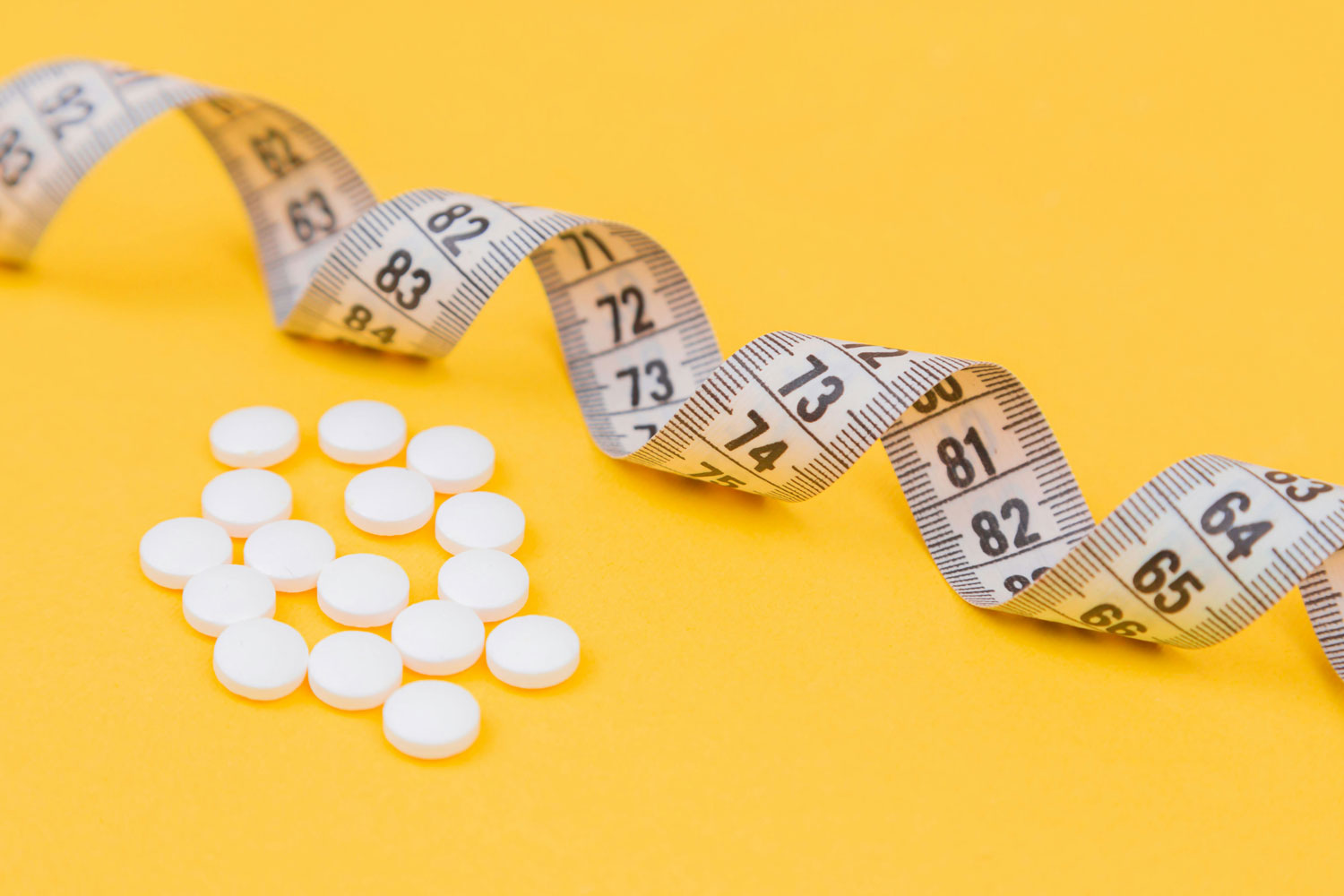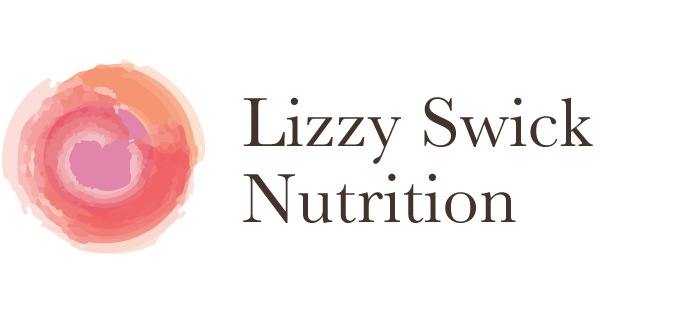Diet and Nutrition Care After You Stop Taking GLP-1 Treatments

GLP-1 agonists are incredibly effective for weight loss. Most people who begin taking one lose anywhere between 6-17% of their body weight, and some newer versions of these medications may lead to weight loss of as much as 25%.
In the midst of a national and worldwide obesity crisis, these medications offer new hope.
We’ve worked with many women who have struggled to lose weight through lifestyle changes alone or have additional health concerns that need urgent alleviation through weight loss. While we always prioritize a targeted, personalized approach to address the root issues, a GLP-1 agonist can be life-changing for the right person.
However, many women don’t want to be on the medications long-term. Common GI side effects such as nausea and constipation can be annoying, and some women want to transition away from weekly injections. These medications can also be expensive and hard to find.
Once you’ve benefited from the weight loss assistance of a GLP-1, a transition to lifestyle-based weight maintenance may be the right move. At LSN, we’re committed to supporting you through the process. It takes more than hope and a prayer to successfully keep weight off long-term, regardless of how you lost it in the first place. It takes proven science-backed strategies and, ideally, a team focused on your needs.
Read on to learn:
- What happens when you stop taking GLP-1s
- Key nutritional strategies to manage the transition
- How LSN can support you in the transition
Transitioning off GLP-1 Treatments
Here’s the hard truth: we have much to learn about successfully stopping a GLP-1 without reversing the weight loss. Because these medications are relatively new in the weight loss field, research exploring the effects of stopping treatment has a long way to go.
One study found that most people who stopped taking a GLP-1 regained about two-thirds of the weight they lost. Because the medications blunt appetite, it makes sense that people might struggle as their appetite returns.
This can sound discouraging, but it’s not the only possible outcome. Knowing the risk of weight regain should help you to create a clear and specific plan for how you will manage the transition off the medication without reversing your progress. This is where LSN can help.
Gradual Transition
A recent study presented at the European Association for the Study of Obesity found that gradually tapering off of a GLP-1, combined with nutrition, exercise, and lifestyle coaching, helped patients maintain their weight loss for the next six months.
While we need a lot more research to clarify the best strategy, talk to your doctor about a gradual reduction in your dose instead of a sudden cessation.
It’s also key to note that success requires a multi-pronged approach. While you’ve hopefully made positive lifestyle changes alongside taking a GLP-1, to maintain the weight loss, you’ll need additional support as your appetite returns.
Key Nutritional Strategies Post GLP-1 Treatments
GLP-1 agonists suppress your appetite and make you feel full quickly. During the transition off the medication, your appetite will return, and it will be easier to overeat. If the dosage is gradually tapered off, this process will hopefully happen slowly enough to allow you to get your bearings.
Coming off the medication that was so helpful for weight loss shouldn’t be a return to where you were before. The GLP-1 agonist didn’t change anything about your food environment, food choices, or food relationship. It only made eating less easy for a time.
Now, you need a clear, focused plan for establishing a supportive food environment, encouraging healthy food choices, and managing the psychological, social, and emotional factors that influence overeating.
These are some of the strategies we recommend.
Focus on Whole Foods
Whole foods are those that have been minimally processed. For example, an apple is a whole food; an apple pie is not.
Whole foods are an excellent source of nutrition. Compared to diets high in processed foods, dietary patterns that emphasize whole foods:
- Are more nutritious
- Are more filling
- Promote weight loss
- Are easier to stick with
- Reduce the risk of chronic diseases such as heart disease and diabetes
Processed foods are designed to encourage overeating, so it’s important to get them out of the house and focus on stocking lots of whole foods like:
- Whole fruits and vegetables
- Whole grains such as rolled oats, brown rice, quinoa, whole-grain pasta, etc.
- Beans, peas, and lentils
- Nuts and seeds
- Lean proteins such as fish, chicken, and tofu
- Healthy oils such as olive, avocado, and canola
- Prioritize Protein
Protein promotes satiety and helps you preserve lean body mass during weight loss. Hopefully, you were already eating high protein while on a GLP-1 agonist, but regardless, your diet should include plenty of healthy protein at each meal.
- Beans, peas and lentils
- Tofu, tempeh, and seitan
- Yogurt and low-fat dairy
- Soy, almond, or other plant-based milk
- Fatty fish and chicken
- Plant-based protein powder/shakes/bars as needed to meet your goals
The amount of protein your body needs depends on various factors. An LSN dietitian can calculate your ideal protein goal and help you design a plan to meet your needs.
Control Carbohydrate Intake
Your blood sugar may be erratic during the transition period. You can support better balance by monitoring and controlling your carbohydrate intake. Choose whole-food, high-fiber carbohydrates, as these enter your bloodstream slower and are less likely to contribute to blood sugar spikes.
Choose 1-2 servings of these sources of carbohydrates with a balanced meal that includes healthy fats and proteins.
- Whole grains such as rolled oats, brown rice, quinoa, whole-grain pasta, etc.
- Small amounts of whole fruits with meals
- Starchy vegetables such as corn, potatoes, and squash
Limit or avoid carbohydrates that promote blood sugar spikes, including sweets, cakes, cookies, candy, white bread, white pasta, and sugary beverages.
Fiber-rich foods
Fiber is your weight loss secret weapon. High-fiber foods work in your digestive tract to naturally boost GLP-1 levels, promoting satiety and helping you feel full longer.
They also support a healthy microbiome, regulate blood sugar levels, and promote regular bowel movements.
Fiber-rich foods should make up a big part of each meal.
- Whole fruits
- Vegetables
- Whole grains
- Beans, peas, and lentils
- Nuts and seeds
- Chia and hemp seeds
- Flax meal
Meal Planning and Portion Control
Knowing what to eat is only part of the work. Once you have the elements of a healthy diet on hand, you need to plan HOW you will use them to support your efforts.
Balanced Meals
The plate method is one of the simplest ways to keep your meals balanced and within an appropriate weight-loss calorie range.
Follow these principles:
- Make ½ your plate vegetables. They can be raw, roasted, or steamed.
- Make ¼ of your plate whole grains.
- Make the remaining ¼ of your plate lean protein, emphasizing plant proteins such as beans, legumes, tofu, etc.
Portion Sizes
The average portion size has increased substantially in the last 50 years. While you were taking a GLP-1, portions were likely easy to manage. But now that you’re coming off the medication, you’ll need to continue to choose smaller portions, even if your appetite tells you otherwise.
Here are a few strategies:
- Use smaller plates
- Measure your portions
- Use a food-tracking app such as MyFitnessPal
- Pre-portion your meals at a time when you’re not hungry
Mindful Eating
Your attitude and approach to eating can help you manage your food intake. If you eat mindlessly, without thought or attention, you will likely eat more than you intend.
Mindful eating is all about paying attention during meals. Here’s what it looks like:
- Sitting down at a table
- Turning off TVs and devices to focus on eating
- Eating with others adds enjoyment
- Eating slowly, chewing each bite
- Savoring the look, smell, and flavor of your food
- Creating a signal for yourself to indicate that the meal is over. You can neatly set down your utensils, fold your napkin, or do some other action that symbolizes the meal is complete.
Supplements and Nutritional Support
Quality supplements can prevent gaps in your nutrition and help you meet the recommended intake for some hard-to-get nutrients. This is why, at LSN, we utilize the best available supplements tailored to our client’s unique needs. During the weight loss and maintenance period, these might include
- Multivitamins to keep your bases covered.
- Omega-3 fatty acids, an often missing type of fat from the diet that play important roles in brain, eye, joint, and immune system health as well as disease prevention.
- Probiotics to support microbiome diversity and the natural production of GLP-1s.
- Fiber supplements to provide food for the microbiome and promote digestive health.
Next Steps
Coming off the GLP-1 will present challenges. Many factors that made weight loss difficult for you in the past will still be a struggle for you moving forward. Although your slimmer body offers much to be hopeful about, you should also proceed with care and intention.
Working with an LSN dietitian and fitness coach is the best investment during this transition. It’s time to dig into the root causes of your eating habits so you can make better choices and keep the weight off permanently.
Here at LSN, we utilize the best science-backed strategies to guide you through the weight loss process and your transition to a lifestyle-based approach. A GLP-1 agonist is one amazing tool. But we’re here to help you create a whole toolbox of strategies and habits that support weight maintenance for life.
References:
- Wilding JPH, Batterham RL, Davies M, et al. Weight regain and cardiometabolic effects after withdrawal of semaglutide: The STEP 1 trial extension. Diabetes Obes Metab. 2022;24(8):1553-1564. doi:10.1111/dom.14725
- https://www.eurekalert.org/news-releases/1044340
- Greger M. A Whole Food Plant-Based Diet Is Effective for Weight Loss: The Evidence. Am J Lifestyle Med. 2020;14(5):500-510. Published 2020 Apr 3. doi:10.1177/1559827620912400
- Wang P, Song M, Eliassen AH, et al. Optimal dietary patterns for prevention of chronic disease [published correction appears in Nat Med. 2024 Jun;30(6):1786. doi: 10.1038/s41591-024-02889-9]. Nat Med. 2023;29(3):719-728. doi:10.1038/s41591-023-02235-5
- Bodnaruc AM, Prud’homme D, Blanchet R, Giroux I. Nutritional modulation of endogenous glucagon-like peptide-1 secretion: a review. Nutr Metab (Lond). 2016;13:92. Published 2016 Dec 9. doi:10.1186/s12986-016-0153-3
- Fu J, Zheng Y, Gao Y, Xu W. Dietary Fiber Intake and Gut Microbiota in Human Health. Microorganisms. 2022;10(12):2507. Published 2022 Dec 18. doi:10.3390/microorganisms10122507
- Bulsiewicz WJ. The Importance of Dietary Fiber for Metabolic Health. Am J Lifestyle Med. 2023;17(5):639-648. Published 2023 Apr 12. doi:10.1177/15598276231167778
- https://www.myplate.gov/eat-healthy/what-is-myplate
- Bellicha A, van Baak MA, Battista F, et al. Effect of exercise training on weight loss, body composition changes, and weight maintenance in adults with overweight or obesity: An overview of 12 systematic reviews and 149 studies. Obes Rev. 2021;22 Suppl 4(Suppl 4):e13256. doi:10.1111/obr.13256


